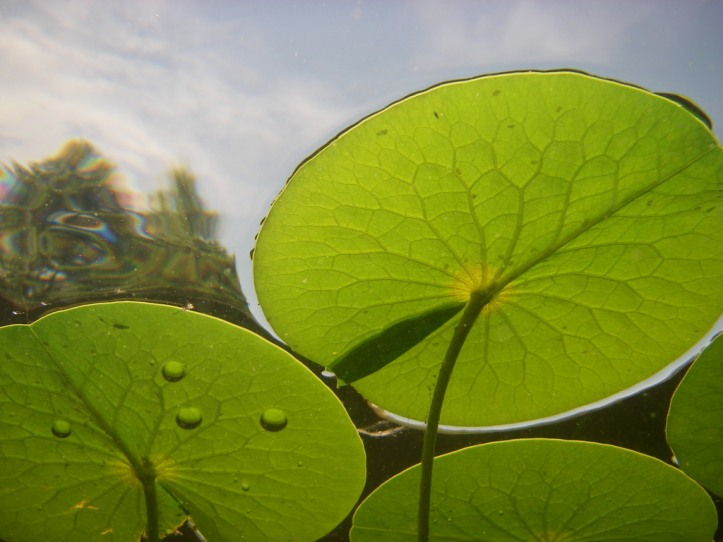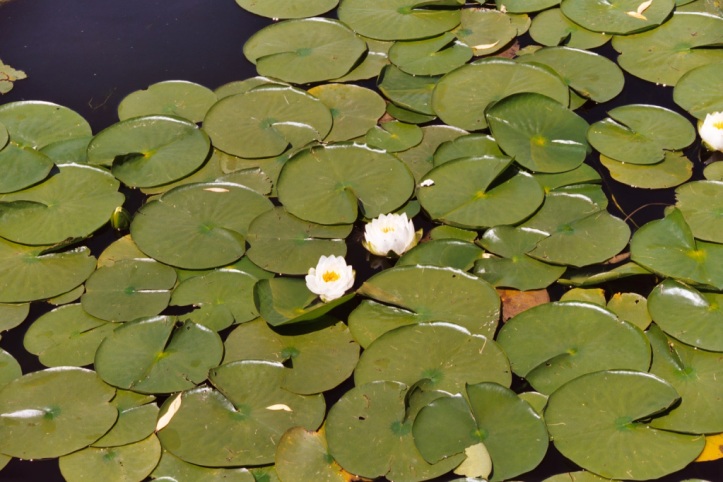Fragrant water lily (Nymphaea odorata) has many redeeming qualities as well as causing significant problems here in Washington. This species of water lily is native to the eastern and central United States and is used both by people and wildlife, but it is not native to Washington. It is appreciated for its beautiful, lotus-like, sweet-smelling flowers that attract both people and pollinators. It was that beauty that attracted people to this plant and inspired them to use it in water gardens starting in the early 1800’s. It comes as no surprise that it has been very popular in our area as well. Over the years, it has been introduced to countless lakes and ponds in western Washington, as well as spreading to new water bodies on its own, carried by currents and wildlife.

Unfortunately, this hardy water lily thrives in our climate and in our lakes to the point where it creates extensive, dense populations that can be detrimental to people and the environment. A small amount of water lily on lakes and ponds can be beneficial, in the same way as our native lake plants such as yellow pond lily (spatterdock), watershield, and pondweeds. However, fragrant water lily grows much more densely and into deeper water than our native floating-leaved plants.

The large, dense fragrant water lily mats can be a hazard to swimmers and boaters as well as creating stagnant, low-oxygen and high temperature areas that are harmful to fish. In the fall, when the extensive mats of leaves decay, this can increase algae problems and lower water quality, as well as being unpleasant for lake users.

Fragrant water lily forms huge, interesting looking rhizomes that grow in the lake bottom and help this plant survive year after year. When fragments break off, they are carried by water currents and create more populations around the water body. Water lily also forms seeds that move in water currents and that are also eaten by ducks, which carry them to new water bodies.
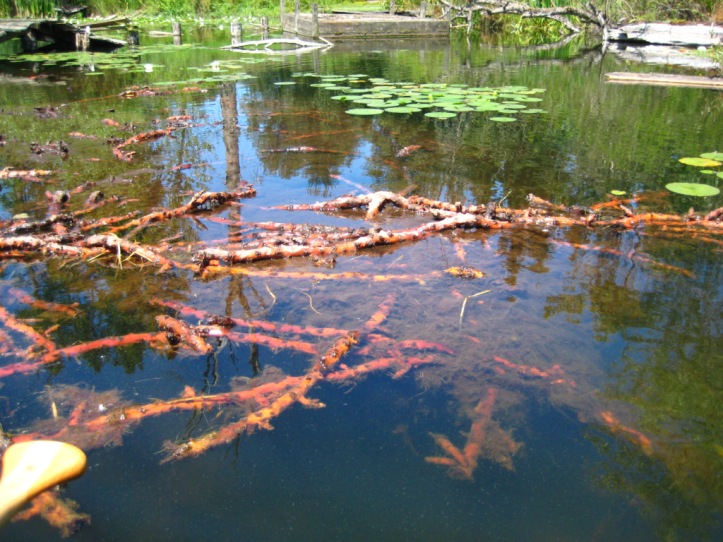
One of the fascinating things about fragrant water lily is how it produces seeds. Each flower is open for only three days. On the first day, it is receptive to pollen and forms a liquid in the flower, which insects fall into, washing off the pollen and sometimes trapping the insect. On the second and third days, the flower produces pollen and no liquid so insects can carry the pollen away to other flowers. After the three days, the flower closes and the stem coils up, pulling the flower down into the water, where the seeds mature. Plants continue to produce flowers all summer like this, producing a steady supply of lovely blooms and numerous seeds.
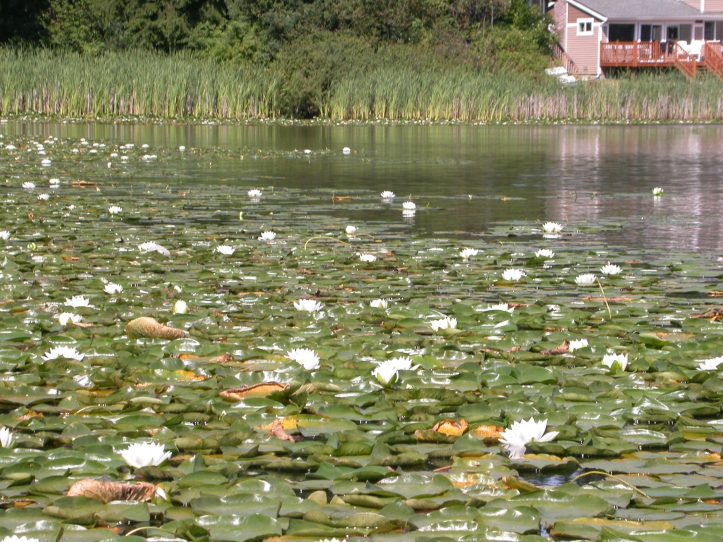
Despite the pretty flowers, lakeside property owners often regret planting fragrant water lily and soon work hard to get rid of them. In large lakes, this can be a huge challenge and can be cost-prohibitive to undertake for most landowners and public agencies. However, in small lakes it is not nearly as difficult. Small populations of water lily can be cleared by simply removing the top growth as it appears over several years. If this is done consistently, especially before the growth reaches the water surface, it can eradicate a small population in two to three years without having to dig up the massive rhizomes.

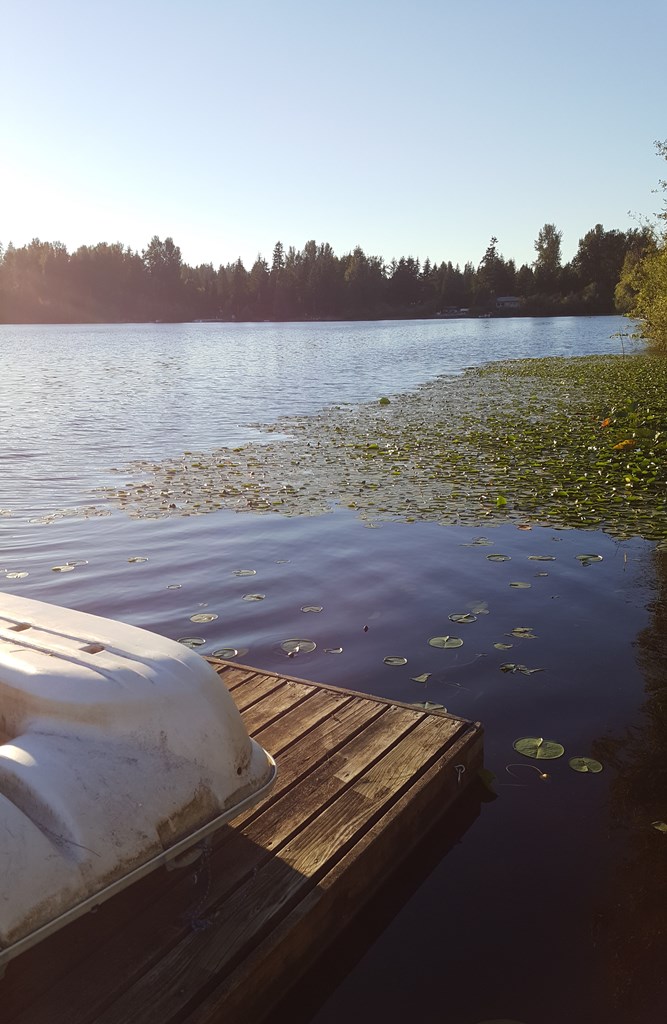
However, even this simple control method requires that you obtain the Aquatic Plants and Fish pamphlet from the Washington Department of Fish and Wildlife (publication #APF-1-98) and follow its instructions. This pamphlet is the HPA permit that is required for manual control of aquatic noxious weeds in Washington. Other methods including chemical control are also effective, but will require additional permits and licenses, and will likely involve hiring a licensed contractor to perform the work.


More information can be found in King County’s Best Management Practices for Fragrant Water Lily and on our fragrant water lily page. Also, see our blog post on where to go for help with aquatic weed control for information about permits and other requirements when working in the water. For a few inspiring stories about people working together to control water lily and other lake weeds, see our blog post about lake residents teaming up to tackle weeds.

Because fragrant water lily is not regulated (meaning control is not required) in King County and is very widespread, we are not tracking locations at this time. However, we can provide technical assistance on this noxious weed and any others, so please feel free to contact us if you have any questions or visit our website for more resources and information on noxious weeds.
